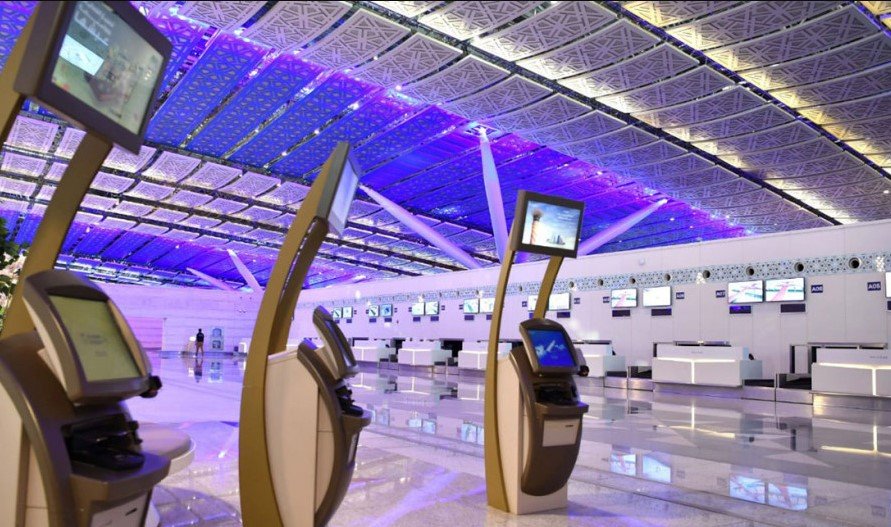The Kingdom’s aviation sector posts impressive punctuality scores as GACA’s May report places both airports and carriers under the spotlight.
Passengers flying in and out of Saudi Arabia in May had something rare in the aviation world — timely departures and arrivals. A new performance report released by the General Authority of Civil Aviation (GACA) shows a strong month for both Saudi airports and national carriers, with some regional hubs quietly outshining their larger counterparts.
GACA’s monthly tracking report, which covers on-time performance and service benchmarks, paints a picture of an industry that’s finding its rhythm. Whether it’s the packed terminals of Jeddah or the scenic AlUla outpost, the trend is clear — timeliness is turning into a norm, not an exception.
Jeddah and Dammam Shine Among Big Players
In the heavyweight division of Saudi airports — those handling over 15 million passengers a year — King Abdulaziz International Airport in Jeddah came out on top with an 89% on-time performance rate.
That’s no small feat considering the sheer volume of passengers and the complexity of operations at one of the Kingdom’s busiest gateways. Jeddah also serves as a critical node during Umrah and Hajj seasons, making its punctuality even more remarkable.
Meanwhile, King Fahd International Airport in Dammam led the 5 to 15 million passenger group with 88%. A solid number, yes, but in a highly competitive bracket, even a single delayed flight can drag the whole average down.
GACA measured performance not just by timekeeping but also through 11 operational criteria, including efficiency in baggage handling, security wait times, and passenger satisfaction metrics.
One sentence to pause and digest.

Smaller Airports, Bigger Wins
It’s not always the giants making the most noise. Sometimes it’s the quieter, leaner operations that really hum.
Prince Sultan bin Abdulaziz International Airport in Tabuk, in the 2 to 5 million passenger category, posted a stellar 91% on-time rate. That puts it ahead of many larger peers, suggesting that operational discipline isn’t always tied to size.
Even more striking were numbers from AlUla International Airport and Turaif Airport — two facilities on opposite ends of the tourism and regional service spectrum, respectively.
-
AlUla, a key component in Saudi Arabia’s cultural tourism push, came in at 96%.
-
Turaif Airport, serving domestic travelers in the north, clocked in at 97%.
Those numbers aren’t just high — they’re near flawless. Especially in a region where heatwaves, sandstorms, and logistical bottlenecks can throw schedules into chaos.
Here’s a look at the top on-time performers by category:
| Airport Category | Top Performer | On-Time % |
|---|---|---|
| >15 million passengers | King Abdulaziz International, Jeddah | 89% |
| 5–15 million passengers | King Fahd International, Dammam | 88% |
| 2–5 million passengers | Prince Sultan bin Abdulaziz, Tabuk | 91% |
| <2 million passengers | AlUla International | 96% |
| Domestic Airports | Turaif Airport | 97% |
Airlines Step Up: Saudia, flynas, and flyadeal Compete Neck and Neck
It wasn’t just the airports doing their job right.
National carriers also had a pretty good run. State-backed Saudia delivered a 90% on-time rate for both arrivals and departures — consistent and dependable. That’s the kind of stat that’s music to the ears of frequent flyers, especially those commuting between cities or heading overseas for work.
Then there’s flynas, the budget-friendly carrier with ambitions far beyond the domestic market. They hit 89% for arrivals and an even better 91% for departures. Impressive, considering low-cost carriers often struggle with tight turnaround times.
flyadeal, meanwhile, nudged ahead slightly — 90% for arrivals and 92% for departures. For a carrier that’s built its brand on no-frills travel, those numbers reflect tight operational control.
Each of these carriers has been expanding routes, adding aircraft, and modernizing fleets — which can easily lead to growing pains. But for now, the metrics suggest they’re managing growth without letting punctuality slip.
One short paragraph for breath.
What’s Driving the Punctuality Surge?
There’s no single magic lever behind this bump in performance. Instead, several factors seem to be aligning.
First, digitalization. Airports across Saudi Arabia have been steadily implementing more advanced tracking and scheduling systems. From biometric check-ins to automated gate assignments, tech is doing its fair share of the heavy lifting.
Second, Vision 2030. The Kingdom’s national strategy includes aviation as a key economic driver — meaning performance targets aren’t just internal goals. They’re part of a bigger political and financial roadmap.
Third, accountability. With GACA publishing these numbers monthly, there’s more pressure — and more incentive — to stay competitive. No airport or airline wants to see its name near the bottom of the rankings.
It’s also worth noting:
-
On-time performance is measured within a 15-minute threshold of scheduled departure or arrival.
-
GACA’s report includes qualitative measures, not just clock-based stats.
-
Passenger experience is now weighted more in overall performance scores.
In short, it’s not just about being on time — it’s about being efficient and pleasant while doing so.
A Glimpse Into What Comes Next
Of course, one good month doesn’t mean everything’s perfect. Summer travel, Hajj season, and continued expansion projects will test the system’s durability.
Riyadh’s King Khalid International Airport — not mentioned among the top this time — is undergoing capacity upgrades. Meanwhile, Jeddah’s continued prominence will be under scrutiny as pilgrims start arriving by the thousands over the next few weeks.
As the Kingdom opens up and domestic air travel becomes more frequent, passengers will likely demand more than just being “on time.” Wi-Fi quality, baggage claim times, ease of navigation — all of these things will start to factor more prominently into future performance reports.
But for now, Saudi airports — big and small — seem to be flying high.
